The Art of Digital Reconnaissance: Know Before You Post
In today’s crowded digital landscape, creating content without doing your homework is like launching a campaign into a fog, you might hit something, but chances are you’ll miss your mark. That’s where digital reconnaissance comes in. As the second phase of the SMART framework (Social Media Amplification, Reconnaissance, and Tactics), reconnaissance is the often-overlooked but absolutely essential step that separates guesswork from strategy. Before you ever draft a caption or schedule a reel, you should be observing, analyzing, and listening. What’s trending in your industry? What are your competitors posting? What are your customers asking or complaining about?
Digital reconnaissance is not just about tools and data; it’s about sharpening your instincts and building content with intention. It ensures that what you post resonates with the right audience, at the right time, on the right platform. In this article, we’ll explore what digital reconnaissance really means, why it’s critical to successful content strategy, and how to incorporate it into your creative workflow. Because when it comes to social media, knowing before you post isn’t optional, it’s strategic.
What Is Digital Reconnaissance?
Digital reconnaissance is the process of gathering insights, observing behavior, and identifying patterns across digital platforms to inform your content strategy. It’s the act of stepping back before you step forward: watching, listening, and learning before publishing. In a world where trends shift overnight and audience attention is fragmented, reconnaissance gives you the clarity to move with purpose instead of guessing what might work.
Think of it like scouting the landscape before launching a campaign. Just as a field commander wouldn’t advance without understanding the terrain, savvy marketers and content creators don’t post without knowing what their audience is responding to, what competitors are saying, and how the broader conversation is evolving. It’s not about copying others, it’s about being aware. By staying informed, you position your brand to act with relevance, not react out of desperation.
At its core, digital reconnaissance helps you answer key strategic questions:
What is trending in your niche or industry?
Where is the attention going right now?
What kind of content is performing best across platforms?
How is your audience feeling, and what are they talking about?
This intelligence lays the foundation for everything that follows in the SMART framework. Before you amplify content or plan your tactical rollout, reconnaissance ensures your message is grounded in reality, not assumptions.
Why It Matters: The Cost of Posting Blind
Posting content without research is like firing arrows in the dark; you might get lucky, but more often, you'll miss the target, waste resources, and potentially harm your brand. In an era where consumers scroll quickly and tune out anything irrelevant, guessing what might resonate is not just inefficient, it’s risky. Digital reconnaissance bridges the gap between creative inspiration and strategic execution, ensuring your content has both direction and impact.
When brands skip the research phase, they often fall into common traps:
Irrelevance: Posting outdated memes or hopping on a trend too late can make your brand seem out of touch.
Tone-deaf messaging: Without understanding your audience's current mood, cultural context, or recent pain points, you risk striking the wrong chord.
Content fatigue: Repeating formats or messages that audiences have already grown tired of can lead to disengagement.
Wasted spend: Paid campaigns launched without insight often underperform, leading to poor ROI and reduced trust in the value of content marketing.
We’ve all seen brands push content that clearly wasn’t grounded in research; posts that feel disconnected, off-brand, or just plain awkward. These mistakes not only reduce engagement but can also erode credibility. In contrast, brands that take the time to observe, analyze, and adapt build stronger resonance and longer-lasting relationships with their audience.
Ultimately, digital reconnaissance is about respecting your audience’s time and attention. It signals that you’re paying attention, that you understand what matters to them right now. In a digital economy driven by connection and context, that kind of awareness is not a luxury, it’s a requirement.
Tools of the Trade: How to Gather Intelligence
Digital reconnaissance isn’t just about intuition, it’s about using the right tools to turn observation into actionable insight. Today’s marketers have access to a wide array of platforms and technologies that make it easier than ever to listen to audiences, monitor competitors, and spot emerging trends. Whether you’re managing content for a small brand or a large enterprise, gathering intelligence doesn’t have to be complicated, it just has to be consistent.
Here are some essential categories and tools to build into your reconnaissance workflow:
-
These tools help you monitor conversations, mentions, and sentiment across social media. They’re essential for understanding how your brand (and competitors) are perceived in real time.
Brandwatch – Advanced analytics and trend tracking across platforms.
Sprout Social – Great for mid-size teams with listening and engagement tools.
Hootsuite Streams – Monitor keywords, hashtags, and competitor activity from one dashboard.
Talkwalker – Strong in sentiment analysis and global media tracking.
-
Staying ahead of what’s coming requires tools that scan the digital horizon for rising conversations and shifting interests.
Google Trends – A free and powerful tool to see what the world is searching for.
Exploding Topics – Tracks topics gaining traction before they go mainstream.
Trend Hunter – Insight into broader cultural and consumer behavior trends.
-
If you want your content to be found, you need to know what your audience is searching for and which hashtags are actively driving discovery.
RiteTag – Real-time analysis of hashtag performance.
Ubersuggest – Great for content ideas and keyword volume estimates.
AnswerThePublic – Visualizes common questions and searches related to your topic.
-
Observing your competitors helps you identify gaps, spot patterns, and avoid repetition. It also reveals what’s working for others in your space.
Meta Ad Library – See what ads competitors are currently running.
Similarweb – Understand traffic sources and audience behavior.
SEMrush – Excellent for analyzing SEO, PPC, and content strategies.
-
No tool replaces your own eyes and ears. Schedule regular check-ins on relevant subreddits, Facebook groups, Twitter threads, and comment sections. Watch what people say, not just about your brand, but about your industry, competitors, and pain points. These observations often uncover insights that algorithms miss.
By using a blend of automated tools and human observation, your brand can move beyond surface-level content and create with insight. Digital reconnaissance ensures that when you post, you're not just adding noise, you’re contributing with clarity, purpose, and precision.
What to Look For
Effective digital reconnaissance goes beyond simply collecting data, it’s about knowing what to pay attention to and why it matters. When monitoring the digital landscape, your goal is to uncover patterns, signals, and opportunities that inform smarter content decisions. One of the most critical elements to watch for is emerging trends. These can take the form of new buzzwords, rising hashtags, viral post formats, or shifts in content styles, such as a growing preference for short-form video or AI-generated media. Recognizing these early allows your brand to stay relevant without feeling reactive.
Audience sentiment is another key focus. Through social listening, you can gauge how your audience is feeling; what excites them, what frustrates them, and what they’re asking for. Pay attention to frequently asked questions, common complaints, or language that reflects deeper emotional undercurrents like confusion, burnout, or anticipation. These insights help shape not just your messaging, but your overall tone and content priorities.
It’s equally important to understand how behavior varies across platforms. Each social media channel has its own culture, favored formats, and timing preferences. A style that succeeds on TikTok may fall flat on LinkedIn. Through reconnaissance, you can see which types of content are driving engagement on each platform and how creators structure their posts for maximum impact.
Watching your competitors can also be incredibly revealing. Look closely at what they’re posting, how often, and which posts are generating real engagement. Are they targeting a new audience, exploring a new format, or launching a campaign? Observing their strategy gives you both inspiration and insight into what the market is responding to, without the need to copy.
Finally, some of the most valuable discoveries come from what’s missing. Look for content gaps, questions your audience has that no one is answering, or topics that are underexplored. These blind spots are opportunities for your brand to lead the conversation. By paying attention to these cues, you position yourself to create not just more content, but smarter, more intentional content that resonates deeply and performs consistently.
Synthesizing Your Intel: Turning Data into Direction
Gathering information is only half the battle. What truly sets strategic content apart is your ability to synthesize that intel into clear and actionable direction. Digital reconnaissance gives you raw insight, but it’s what you do with that insight that determines the strength of your content strategy. After observing trends, monitoring competitors, and listening to your audience, the next step is to look for patterns and connections. Ask yourself: What topics keep surfacing? What frustrations or desires are being expressed repeatedly? Which content formats are gaining traction across multiple accounts or platforms?
From there, begin to shape hypotheses. For example, if you notice that your audience is frequently searching for guidance on a specific process, you might create a how-to video series. If you see a rise in engagement with behind-the-scenes content in your industry, that could inform a new narrative approach to your posts. The goal is to align your content ideas with the current digital climate, not to chase every trend, but to identify which ones genuinely intersect with your brand’s value and your audience’s needs.
Once your insights are organized, turn them into themes, campaign angles, and content calendars. Build messaging pillars based on what’s resonating in your research. Use timing cues, like recurring industry events or seasonal conversations, to guide when and how to publish. You can also use your recon findings to test ideas in low-risk ways, such as through stories or short posts, before committing to larger campaigns.
Ultimately, synthesizing your reconnaissance isn’t about overcomplicating your workflow, it’s about elevating it. By connecting dots between what you see and what your audience needs, you create content with direction, precision, and purpose. The result is a strategy that’s not just informed, but intentional, and that makes all the difference in a noisy digital world.
Reconnaissance as an Ongoing Practice
Digital reconnaissance isn’t a one-time task you check off during campaign planning, it’s an ongoing practice that should be embedded into your content development process. The digital landscape evolves rapidly, and what’s true or trending today may be irrelevant tomorrow. Audience preferences shift, platforms roll out new features, and conversations move at the speed of a scroll. To stay aligned and effective, your brand must treat reconnaissance not as a preliminary phase, but as a constant rhythm of observation and adaptation.
Make space in your weekly or monthly workflow to revisit key sources of insight. Set up regular social listening sessions to track changes in sentiment, trending topics, and competitor behavior. Subscribe to relevant newsletters, follow thought leaders, and monitor industry-specific hashtags to stay informed. Even a 30-minute check-in each week can help you spot emerging patterns and make timely adjustments to your messaging or content formats.
It’s also important to evolve your tools and techniques as your strategy grows. What worked as a basic reconnaissance method when you were just starting may not be enough as your brand expands across platforms or engages more complex audiences. Reevaluate your stack of tools regularly and look for new ways to streamline data collection, visualize trends, and benchmark performance.
Perhaps most importantly, create a feedback loop between reconnaissance and content execution. After each campaign or major post, revisit the insights that informed it. Did your assumptions hold true? Did your audience engage as expected? Treat each outcome as additional intelligence to refine your process further.
By approaching reconnaissance as a continuous discipline rather than a static step, you build a content strategy that is agile, informed, and resilient. You’re no longer reacting to the digital environment, you’re moving with it, anticipating needs, and showing up with relevance and authority at every turn.
Conclusion: Know Before You Post
In a digital world where timing, tone, and relevance can make or break your brand’s message, posting without insight is no longer an option. Digital reconnaissance, thoughtful observation and informed strategy, is what separates noise from meaningful engagement. It’s not just about watching trends; it’s about understanding your audience, your industry, and your competitive landscape so you can move with purpose. This is why “know before you post” isn’t just a suggestion, it’s a strategic imperative.
Within the SMART framework (Social Media Amplification, Reconnaissance, and Tactics), reconnaissance is the anchor. It grounds your messaging in truth, ensures your content reflects real-time audience needs, and prepares your brand to act with precision. Without it, amplification efforts fall flat and tactical execution becomes guesswork. With it, you gain clarity, confidence, and direction.
At ZeroFilm DELTA, we help businesses integrate reconnaissance into their broader digital strategy through data-informed content planning, social media monitoring, and competitor insight services. Whether you’re just beginning to build your online presence or refining an established digital voice, our team helps you translate raw information into smart, engaging content that moves the needle.
When you partner with ZeroFilm DELTA, you’re not just creating content, you’re crafting a strategy rooted in research, guided by insight, and designed for measurable impact. Because in today’s digital landscape, smart brands don’t just post, they prepare, they observe, and they lead. They know before they post.



